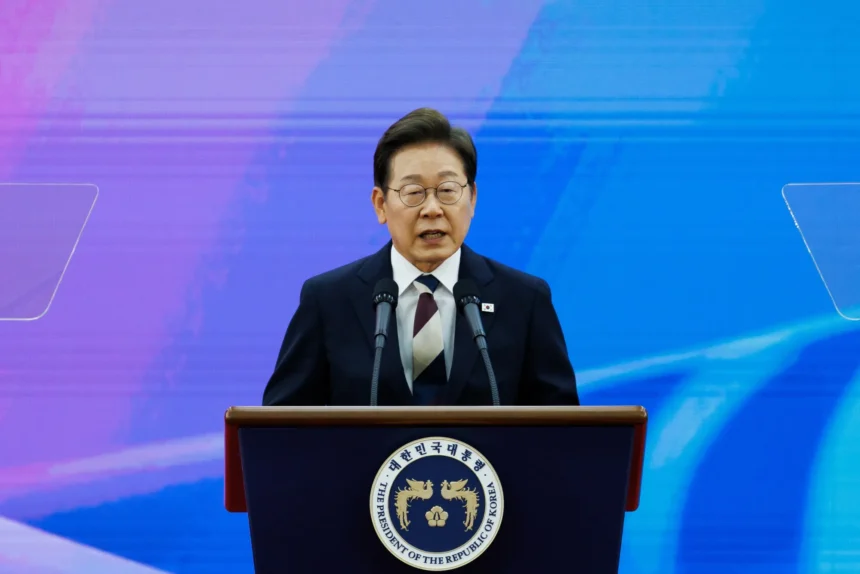
South Korean President Lee Jae Myung has introduced a large $22.1 billion (30.5 trillion won) stimulus package to help revive the slowing economy and support struggling citizens. The plan, which was approved by the Cabinet, includes:
- 20.2 trillion won in new government spending
- A cut of 10.3 trillion won in revenue expectations, the first such adjustment in five years
President Lee said that while keeping the budget balanced is important, the economic situation is too serious to ignore. He believes it’s the right time for the government to step in and help.

Read more: India’s ₹900 Bn Dividend Push on PSUs Raises Economic Red Flags, Say Analysts
Key Highlights of the Stimulus Plan:
1. Universal Cash Handouts
- All South Korean citizens will get at least 150,000 won through digital coupons.
- Lower-income families will receive more.
- In a second round, 90% of citizens (excluding the richest 10%) will get an extra 100,000 won.
2. Support for Struggling Sectors
- 2.7 trillion won for the construction sector, which has been shrinking for four quarters.
- 1.2 trillion won to support future industries like AI and renewable energy.
3. Help for Everyday People
- 5 trillion won for general livelihood support, including:
- 1.4 trillion won to help people in debt
- 1.6 trillion won for job-seeking aid and unpaid wage support
Changes in Government Finances:
- The government has lowered its revenue forecast to 642.4 trillion won, down from 651.6 trillion won.
- Total spending for 2025 will now be 702 trillion won, higher than the earlier estimate of 673.3 trillion won.
- The fiscal deficit (the gap between income and spending) will grow to 110.4 trillion won, or 4.2% of GDP.
- National debt is expected to cross 1,300 trillion won, with a 49% debt-to-GDP ratio.
To pay for this plan:
- The government will issue 19.8 trillion won in treasury bonds.
- Another 10 trillion won will come from reshuffling the budget and using reserves.
Even with a growing deficit, the Finance Ministry says South Korea’s budget remains strong compared to other countries. The plan is expected to increase the country’s GDP growth by 0.1 to 0.2 percentage points.
Currently, the Bank of Korea expects 0.8% growth, while the IMF predicts 1% growth for the country.












